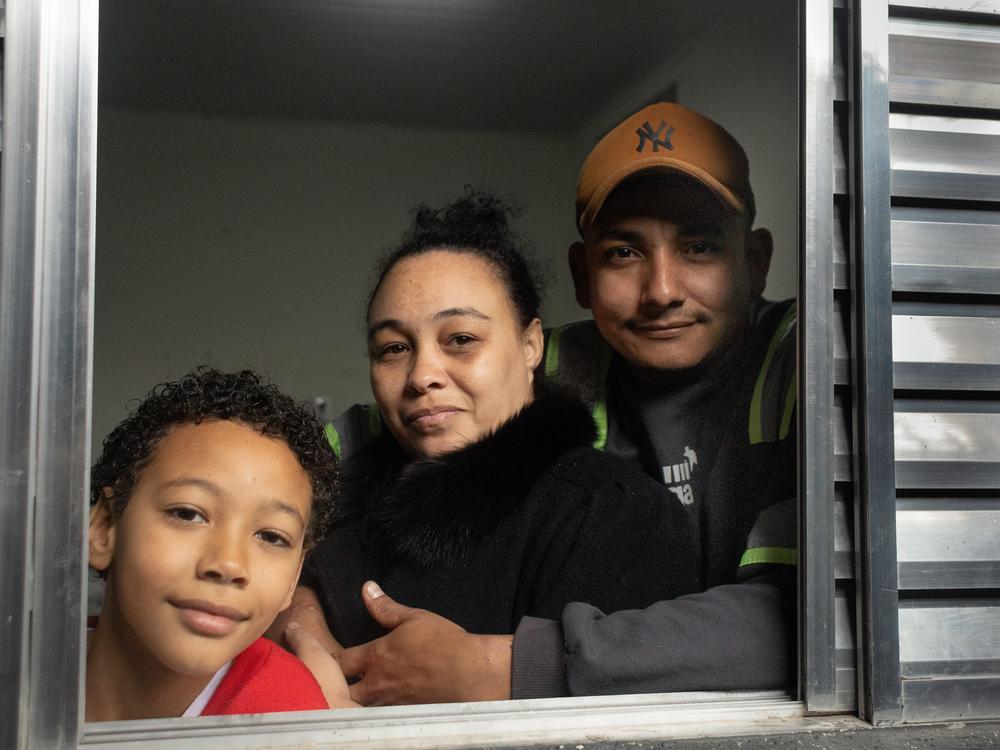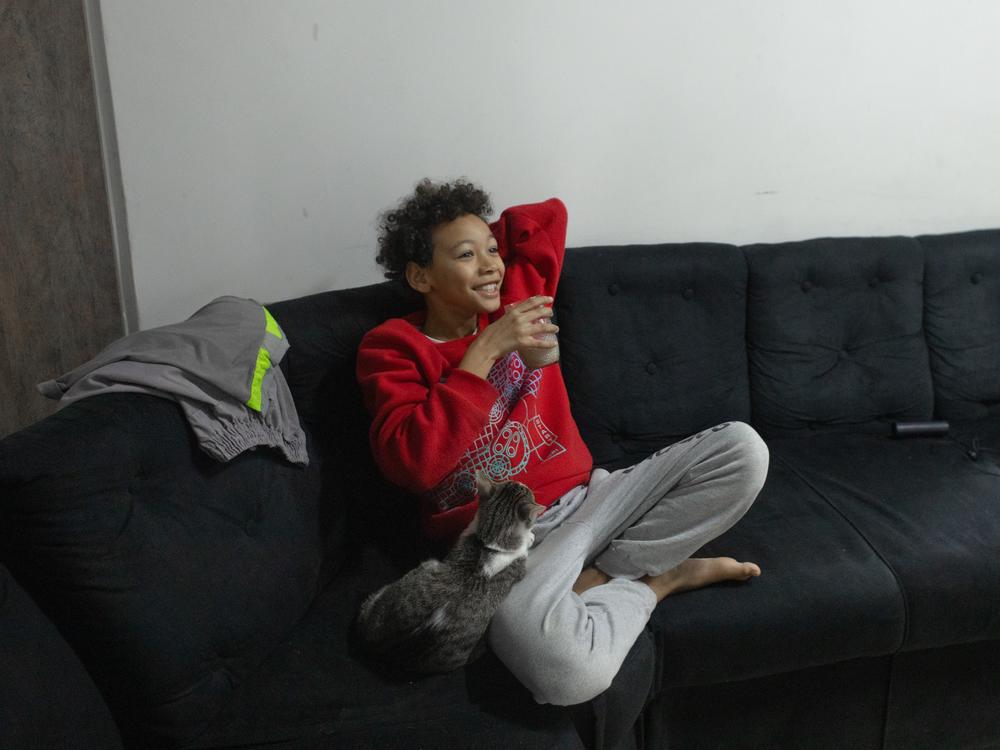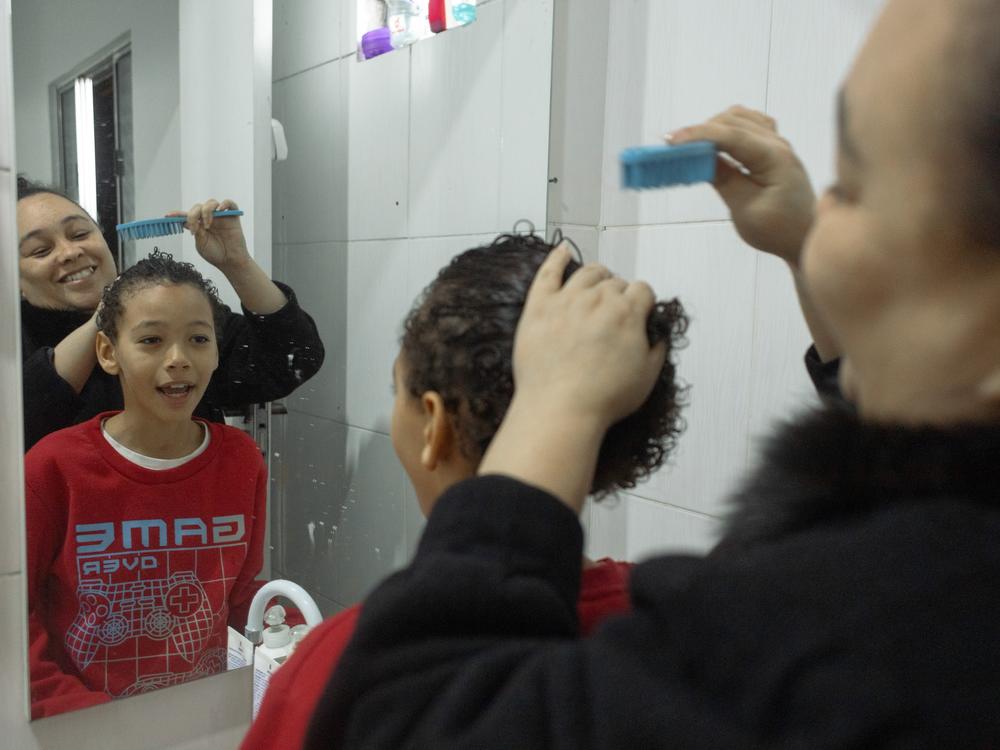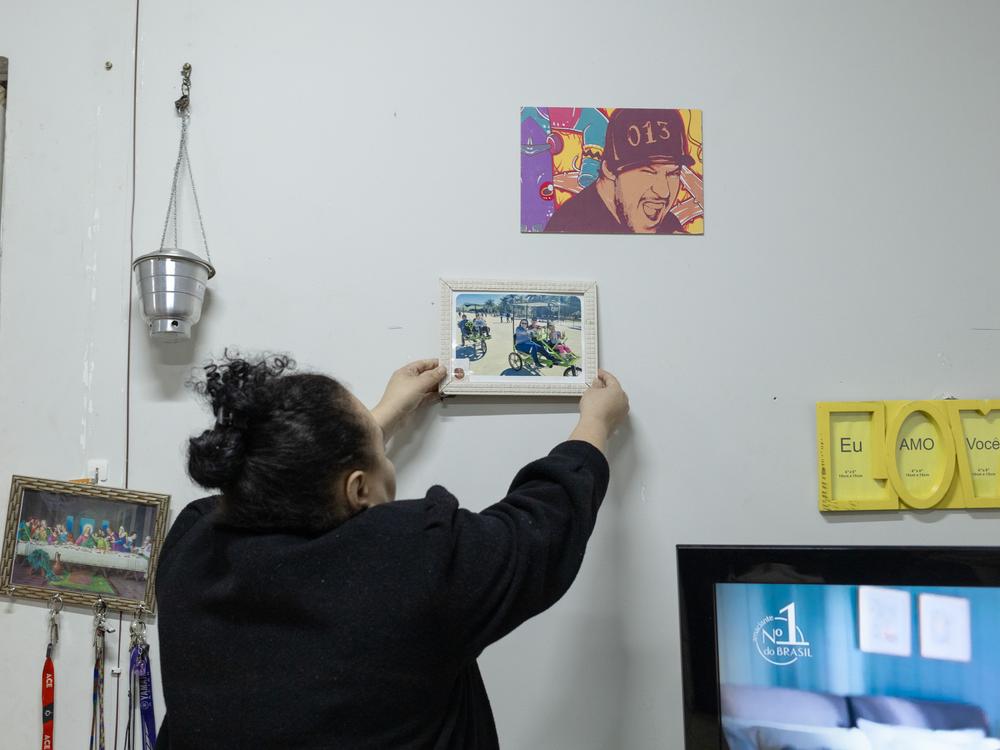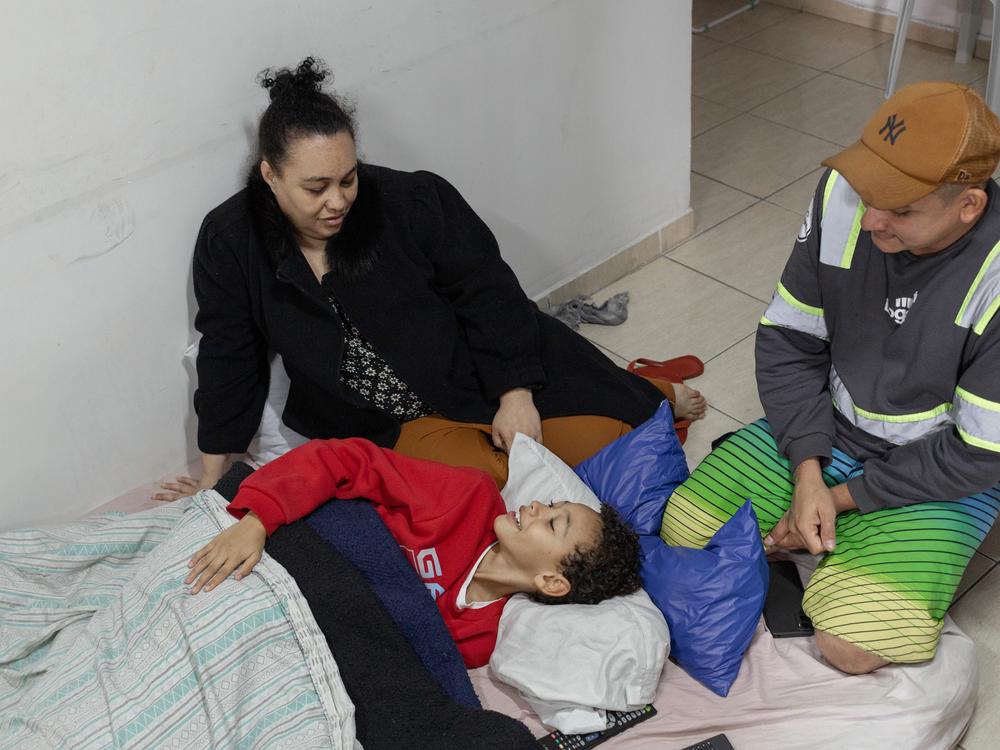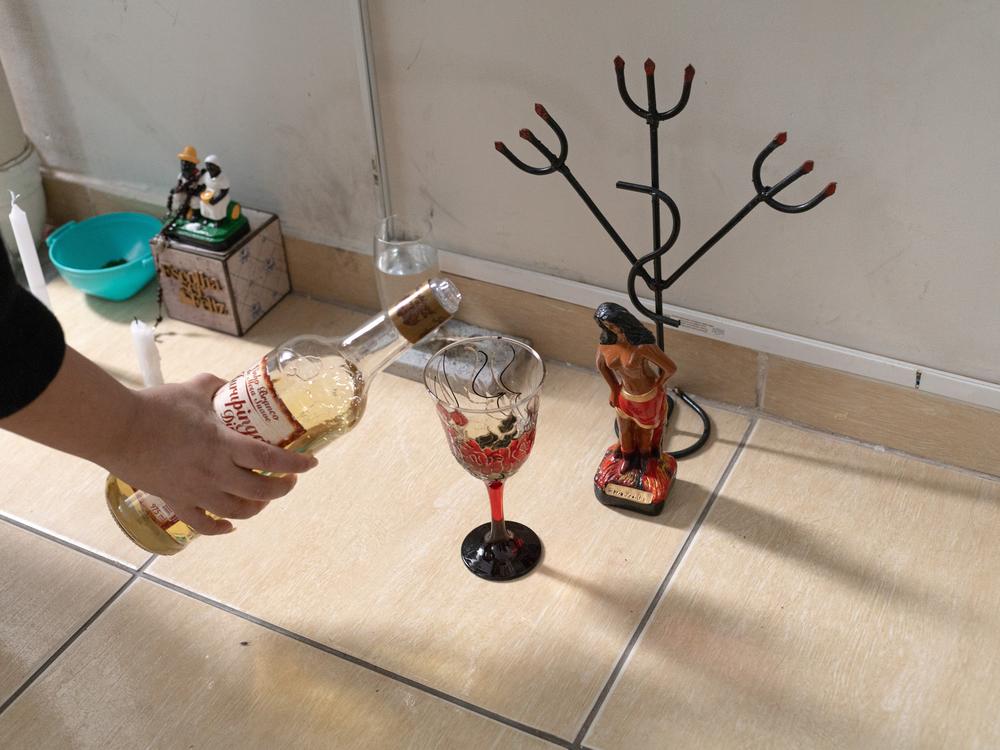Section Branding
Header Content
Whatever happened to ... the family who lost it all? Spoiler alert: It's a happy ending
Primary Content
In August 2023, we shared the story of a family of three from São Paulo who had lost everything due to the pandemic. With no work, home, car or food, and their young son placed with his grandmother, they struggled to survive. They spent nights on the floor at a transit hub and occasionally found beds in a shelter.
A program called Vila Reencontro allowed them to move into a transitional tiny home and get access to food and social services. Now, reunited, employed and settled into a rental in a quiet neighborhood near family, they are gradually getting back on their feet.
We followed up to see how they’re doing now.
With fists held tight, Henrique rubs his eyes as he closes his bedroom door and makes his way to the kitchen to fix himself breakfast. The 10-year-old mumbles a “good morning” to his mom and dad as he passes through the living room and gives his grey and white cat, affectionately named Psycho, a scratch on the head and under the chin.
In the kitchen, he fills a glass with milk and scoops a heaping spoonful of chocolate powder into it before giving it a stir and putting it in the microwave.
“He always makes his own breakfast,” says his mom, Erica Lacerda de Souza, as she watches him from the kitchen doorway, her husband, Bruce Lee Sousa, nodding in agreement from the couch in the adjoining living room. “It’s his job to take care of Psycho too. He puts out his food and water and makes sure the litter box is clean. I want him to be independent and responsible.”
Just a year ago the trio was one of 37 families each of whom were living in a tiny house in the downtown São Paulo neighborhood of Anhangabaú. It was part of a municipal program called Vila Reencontro, inspired by New York’s Housing First program from the 1990s and one of the ways the Brazilian city of 12 million was trying to help its rising number of unhoused people, particularly during the pandemic, get back on their feet. The program provides families with tiny homes for up to 36 months along with access to food and social services.
All is lost
When they had to close their bodega because of pandemic regulations and their other work dwindled — Lacerda de Souza’s as a cleaner and Lee Sousa’s at a car wash — they lost the house they rented and almost everything in it. While Henrique, who was then 6, was sent to live with his maternal grandmother, the couple spent two weeks sleeping on the floor at São Paulo's downtown Barra Funda Terminal — a central hub for city transit — and months making their way through the city’s shelter and other temporary housing systems before learning about Vila Reencontro and being offered a tiny home.
There, Henrique was able to live with them again, and they were provided a slew of other opportunities, including help finding permanent housing and jobs.
Just six months after moving to the 194-square-foot home — slightly smaller than a one-car garage — Lee Sousa was offered a spot in a work program and started his job with the city’s sanitation department — which he still has today — last September. The trio also benefited from a city housing program that allowed them to flip through a catalogue of potential homes available to rent so they could choose what would be the best fit for their family.
A new beginning
After seeing several options, they decided to go with their spacious home in the east-end neighborhood of Guaianases, which they’ve now been in for about two months. It’s far from downtown, but Lacerda de Souza says it’s what she prefers.
“I like living in a quiet, family neighborhood,” she says. “Here I can walk to the supermarket, there’s a bakery around the corner and Henrique doesn’t have far to go to school. We’re a lot closer to my mom’s house now too, so it’s easy for her to come visit or for Henrique to go spend time with her.”
The housing program will pay their rent for the next two years and has already helped them furnish their new home, providing them with a table, a bed, armoires and a fridge. Other items — like their couch and stove — they purchased themselves, as they slowly rebuild what they lost. After two years, the family should be able to pay their own rent.
The family receives visits every other week from a program social worker, who has also helped them get access to medical care – Lacerda de Souza has back pain from two herniated discs -- and adjust to their new circumstances.
“There are so many small things you take for granted,” Lee Sousa says. “Like knowing how to plan your monthly grocery run. It’s been years since we were able to do that ourselves. When you’re in shelters or even in the tiny home, meals are just served to you. Now we have to relearn how to budget for what we need.”
The three like spending time together in the living room, where they often lay the mattress from the couple’s bedroom on the floor so they can watch movies and TV shows together. Lee Sousa has a penchant for Indian films, while Lacerda de Souza prefers shows like Supernatural and Henrique likes watching Cobra Kai.
Their new home is at the top of a lengthy flight of stairs, and the family has already befriended their neighbors who live in the other three apartments off the long stretch of corridor. When Lee Sousa is at work and Henrique is at school, Lacerda de Souza likes to chat over coffee with the two young women who live next door. When Lee Sousa arrives, their younger male neighbors are often waiting for him to talk something over or ask for advice.
And Henrique has been doing exceptionally well at school, making new friends quickly and never wanting to miss a day. Every morning he takes his time doing his hair, making sure the curls are just right, before his mom walks him to the corner, where she watches him head up the street because he doesn’t want his friends to see that she’s with him.
“I guess he’s already getting too old for that,” she says with a laugh.
A religious revival
Their house, says Lacerda de Souza, is rarely empty now, and has become a hub not only for family — weekend pasta nights are a favorite event — but also for their religious community.
The family’s faith lies in the Afro-Brazilian religion called Quimbanda, one of the most stigmatized religions in the country. Due to cultural misunderstanding and negative stereotypes, they struggled to practice it while living in shelters and the tiny home for fear that others wouldn’t understand.
But a small area off the living room in their new home has allowed them to return to practicing their faith, where statues of saints and other sacred objects are on display so they can pray and meditate — always with the curtains drawn. Others from the community are often there to do the same, and some stay over at the family’s new home when they have nowhere else to go.
“Having your own space is everything,” says Lacerda de Souza. “It’s freeing. And I’m always happy to help others. Where would we be if nobody had helped us?”
Jill Langlois is an independent journalist based in São Paulo, Brazil. She has been freelancing from the largest city in the western hemisphere since 2010, writing and reporting for publications like National Geographic, The New York Times, The Guardian and Time. Her work focuses on human rights, the environment and the impact of socioeconomic issues on people's lives.
